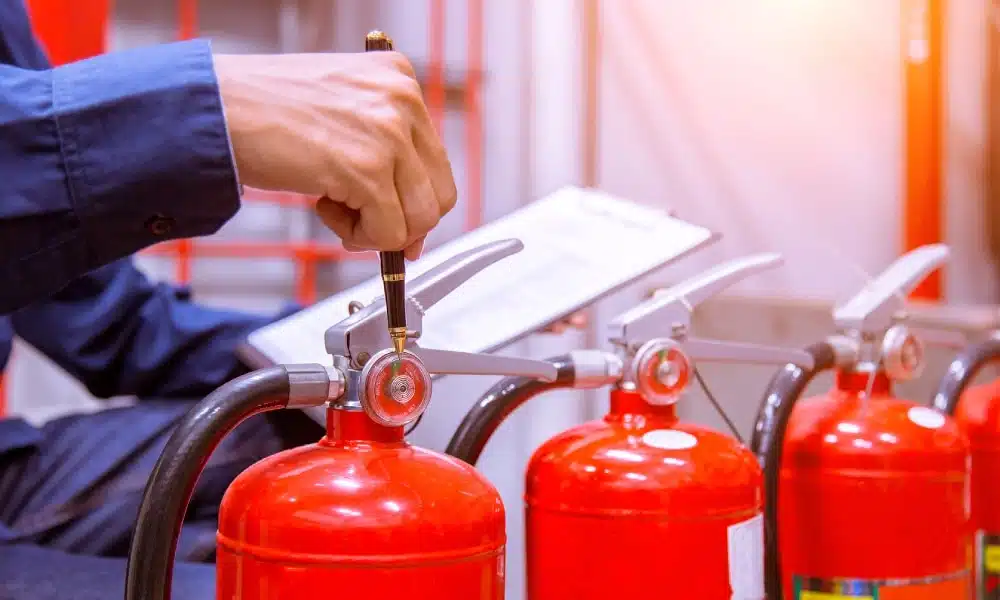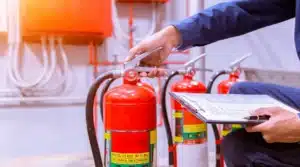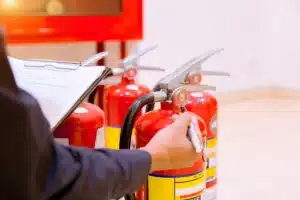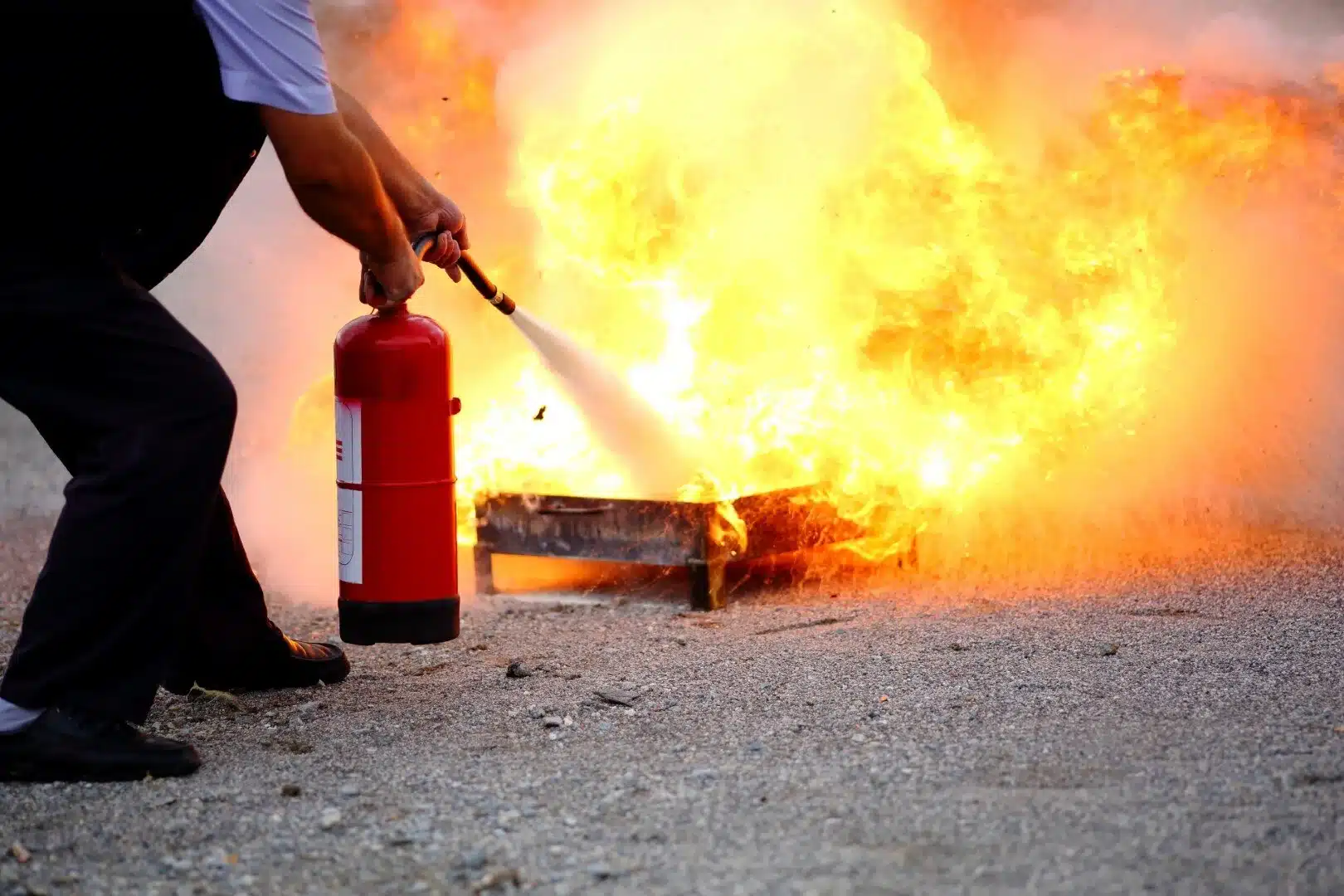If you’re a landlord, property manager, or business owner in London, you’ve probably heard both terms thrown around: fire risk assessment and fire safety inspection. They sound similar, and yes, they’re both essential for protecting your property and the people inside it. But they’re not the same thing and understanding the difference between fire inspection and fire risk assessment could save you from compliance headaches, legal penalties, and potentially catastrophic incidents.
With fire safety law continuing to evolve in 2025, particularly following high-profile building safety reforms, it’s never been more important to get this right. So let’s break down exactly what each service involves, when you need them, and how they work together to keep your property compliant and safe.
What Is a Fire Risk Assessment?
A fire risk assessment is a comprehensive, legally required evaluation of fire hazards and risks within a building or premises. Under the Regulatory Reform (Fire Safety) Order 2005, if you’re responsible for a non-domestic property in England whether it’s a rental flat, an HMO, a commercial building, or a workplace you must carry out a suitable and sufficient fire risk assessment.
The purpose? To identify potential fire hazards, evaluate who might be at risk, and put appropriate measures in place to reduce those risks to an acceptable level.
What Does a Fire Risk Assessment Include?
A proper fire risk assessment London typically covers:
- Identification of fire hazards: Ignition sources, flammable materials, faulty electrical equipment, cooking facilities, and more
- Identification of people at risk: Staff, residents, visitors, vulnerable individuals, and people sleeping on the premises
- Evaluation of existing fire safety measures: Fire alarms, emergency lighting, fire doors, escape routes, signage, and firefighting equipment
- Risk assessment and recommendations: Determining the likelihood and potential consequences of fire, then providing an action plan to mitigate those risks
- Emergency plans and procedures: Ensuring there’s a clear evacuation plan, trained fire wardens (where applicable), and appropriate fire safety training
- Documentation: A written record of findings and recommendations, which must be kept up to date
Fire risk assessments are not one-and-done. They should be reviewed regularly especially after any significant changes to the building, its use, or occupancy and at least annually as best practice.
Who Can Conduct a Fire Risk Assessment?
Technically, a “responsible person” (usually the property owner, landlord, or employer) can carry out their own fire risk assessment. However, most choose to hire a qualified fire safety engineer London or a certified fire risk assessor. Why? Because assessments require technical knowledge of fire behavior, building regulations, and current legislation. Getting it wrong can leave you legally exposed and your occupants in danger.
For landlords managing HMOs or multiple properties across Greater London, professional fire risk assessments are not just smart they’re essential for demonstrating due diligence and meeting fire safety compliance for landlords.
What Is a Fire Safety Inspection?
Now let’s talk about fire safety inspections. Unlike fire risk assessments, which you commission yourself, a fire safety inspection is typically carried out by the local fire authority—in London, that’s the London Fire Brigade (LFB). Think of it as an enforcement check rather than a proactive safety measure.
Fire safety inspections are conducted under the same Regulatory Reform (Fire Safety) Order 2005, but they’re initiated by the fire service, not by you. An inspector from the fire brigade will visit your premises to check that you’re complying with fire safety legislation and that your fire risk assessment is suitable and up to date.
What Happens During a Fire Safety Inspection?
During a property fire safety inspection, the fire inspector will:
- Review your existing fire risk assessment to ensure it’s adequate and current
- Check that recommended actions from the assessment have been implemented
- Inspect fire safety measures: alarms, emergency lighting, fire doors, escape routes, fire extinguishers, and signage
- Assess management procedures: evacuation plans, staff training records, and maintenance logs
- Identify any immediate hazards or non-compliance issues
If the inspector finds deficiencies, they can issue an informal notice, an enforcement notice, or in serious cases a prohibition notice that can shut down your premises until issues are resolved. Persistent or severe breaches can result in prosecution, unlimited fines, and even imprisonment.
When Might You Face a Fire Safety Inspection?
Fire safety inspections can be:
- Routine: Part of the fire authority’s regular inspection program, especially for high-risk premises like HMOs, care homes, and commercial buildings
- Reactive: Triggered by complaints, incidents, or concerns raised by residents or employees
- Post-incident: Following a fire or near-miss event
You won’t always get advance notice, which is why staying on top of your fire safety compliance in Greater London is critical.
Key Differences Between Fire Risk Assessment and Fire Safety Inspection
Let’s clarify the fire risk assessment vs fire inspection debate with a straightforward comparison:
| Aspect | Fire Risk Assessment | Fire Safety Inspection |
|---|---|---|
| Who initiates it? | Property owner, landlord, or employer | Local fire authority (London Fire Brigade) |
| Who conducts it? | Responsible person or hired fire safety professional | Fire safety inspector from the fire brigade |
| Legal requirement? | Yes—you must have a current, suitable assessment | Yes—fire authority has the power to inspect |
| Purpose | Proactive: Identify and mitigate fire risks | Enforcement: Ensure compliance with fire safety law |
| Frequency | Regular reviews (annually or after changes) | Variable—routine, complaint-driven, or post-incident |
| Documentation | Written assessment with recommendations | Inspection report, potentially with enforcement notices |
| Cost | You pay for a professional assessment | No charge—conducted by fire authority |
| Consequences of non-compliance | Potential prosecution if not done or inadequate | Enforcement notices, fines, closure, prosecution |
The key takeaway? A fire risk assessment is something you commission proactively to stay compliant and safe. A fire safety inspection is what happens when the fire brigade comes to check that you’ve done your job properly.
Fire Audit vs Fire Risk Assessment: Are They the Same?
You might also hear the term “fire audit,” which can add to the confusion. In practice, a fire audit is essentially a detailed review of fire safety arrangements, often conducted as part of ongoing compliance monitoring. Some professionals use “fire audit” and “fire risk assessment” interchangeably, but technically, an audit can be broader—looking at management systems, policies, and documentation as well as physical fire safety measures.
For most landlords and business owners, the difference between fire inspection and fire risk assessment is more critical to understand. If you’re unsure which service you need, a qualified fire safety engineer can help you navigate the terminology and requirements.
Which Service Do You Need?
Here’s where it gets practical. As a property owner or manager, you don’t get to choose whether or not you need a fire risk assessment you’re legally required to have one. But understanding when and why you need it, and how it relates to fire safety inspections, will help you stay compliant and avoid costly surprises.
For Landlords and Property Managers
If you rent out residential properties, especially HMOs (houses in multiple occupation), you must have a valid fire risk assessment. This is non-negotiable, and it’s a key part of your fire safety compliance for landlords obligations.
HMOs in particular are high-risk because of shared escape routes, multiple occupants, and the increased likelihood of cooking-related fires. The London Fire Brigade frequently inspects HMOs, so having a professional, up-to-date fire risk assessment is your best defense against enforcement action.
You should also ensure that all recommended actions from the assessment are implemented promptly whether that’s installing interlinked smoke alarms, upgrading fire doors, or improving escape signage.
For Business Owners and Employers
If you operate a business in London whether it’s a shop, office, restaurant, warehouse, or factory you’re the “responsible person” under fire safety law. You must:
- Conduct a fire risk assessment covering all areas of your premises
- Implement fire safety measures based on the assessment
- Train staff on fire safety and emergency procedures
- Keep the assessment up to date
Larger or more complex businesses may benefit from periodic fire audits in addition to the standard assessment, especially if you have multiple sites or high-risk operations.
For New or Renovated Properties
If you’ve recently acquired a property, changed its use, or completed major renovations, you need a fresh fire risk assessment. Building work can introduce new hazards, alter escape routes, or compromise fire safety features like compartmentation and fire doors. A professional assessment ensures that your fire safety certificate London requirements are met and that the property is safe for occupancy.
How Fire Risk Assessments and Fire Safety Inspections Work Together
Here’s the important bit: fire risk assessments and fire safety inspections aren’t competing services they complement each other. Your fire risk assessment is your proactive tool for staying compliant and safe. The fire safety inspection is the fire authority’s way of checking that you’ve done it properly.
Think of it like this: if you maintain a comprehensive, up-to-date fire risk assessment and implement all its recommendations, a fire safety inspection should be straightforward. The inspector will review your assessment, see that you’ve taken fire safety seriously, and move on.
But if your assessment is outdated, incomplete, or absent altogether, the inspector will flag serious issues and you could face enforcement action.
Best Practices for Staying Compliant
- Commission a professional fire risk assessment from a certified fire safety engineer, especially for complex or high-risk properties
- Review your assessment annually and after any significant changes to the building or its use
- Act on recommendations promptly: Don’t let fire safety issues linger on your to-do list
- Keep detailed records: Document your assessment, maintenance schedules, staff training, and any fire safety improvements
- Stay informed about fire safety law 2025: Legislation evolves, particularly following the Building Safety Act and other post-Grenfell reforms
- Engage with fire compliance services London for ongoing support, including fire safety audits and training
When the fire brigade shows up for an inspection, you want to be able to hand over a well-maintained fire inspection checklist UK, complete with evidence that you’re taking fire safety seriously.
Why Choose Certified Fire Safety Engineers
Not all fire risk assessments are created equal. A tick-box exercise won’t cut it you need a thorough, professional evaluation that genuinely protects your property and the people inside it.
Here’s what to look for in a fire safety provider:
- Qualifications and accreditations: Look for professionals with recognized certifications, such as the Institution of Fire Engineers (IFE), NEBOSH Fire Safety qualifications, or membership in professional bodies
- Local expertise: Fire safety in London comes with unique challenges high-rise buildings, older housing stock, diverse occupancy types, and stringent enforcement by the London Fire Brigade. Choose a provider with deep knowledge of local regulations and building types
- Comprehensive service: The best fire compliance services London offer more than just assessments they provide inspections, audits, training, and ongoing support to keep you compliant
- Clear, actionable reports: Your fire risk assessment should be easy to understand, with prioritized recommendations and realistic timelines
- Responsive communication: Fire safety isn’t something you want to deal with alone. Choose a provider who’s available to answer questions and support you through implementation
Whether you’re managing a single rental property in South and West London or overseeing a portfolio of commercial buildings across Greater London, working with experienced fire safety professionals gives you peace of mind and legal protection.
Final Thoughts: Don’t Wait for an Inspection
The difference between fire inspection and fire risk assessment might seem like splitting hairs, but it’s actually the difference between being proactive and reactive. Fire risk assessments are your opportunity to take control of fire safety, identify risks before they become emergencies, and demonstrate that you’re a responsible property owner.
Fire safety inspections, on the other hand, are accountability checks. They’re not optional, and they can have serious consequences if you’re found lacking.
The good news? If you stay on top of your fire risk assessments and implement the recommendations, you’ll be in excellent shape when the fire brigade comes knocking.
Fire safety isn’t just about ticking boxes or avoiding fines it’s about protecting lives. Whether you’re a landlord, property manager, or business owner, you have a legal and moral responsibility to ensure that your premises are safe.
Ready to Get Fire Safe?
Don’t leave fire safety to chance. Whether you need a comprehensive Fire Risk Assessment London or want to prepare for an upcoming Fire Safety Inspection London, our certified fire safety engineers are here to help.
We provide thorough, professional fire risk assessments tailored to your property type whether it’s an HMO, commercial premises, or multi-occupancy building. Our team understands London’s unique fire safety challenges and works with you to implement practical, cost-effective solutions that keep you compliant and your occupants safe.
Contact us today to book your fire risk assessment or to discuss your fire safety compliance needs. Serving landlords, property managers, and businesses across Greater London, South and West London, and beyond we’re your trusted partner in fire safety compliance.
Get in touch now and take the first step toward complete fire safety peace of mind.






